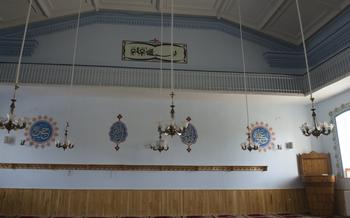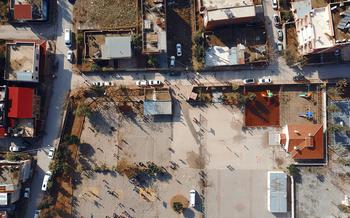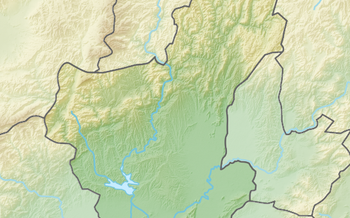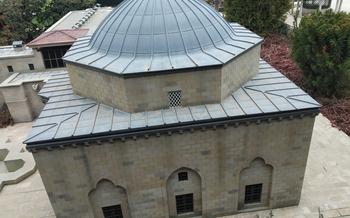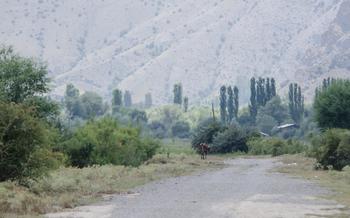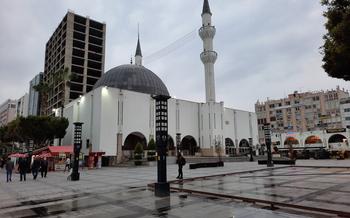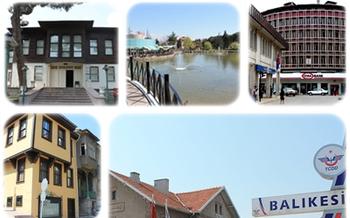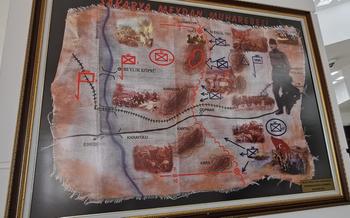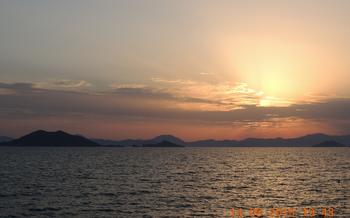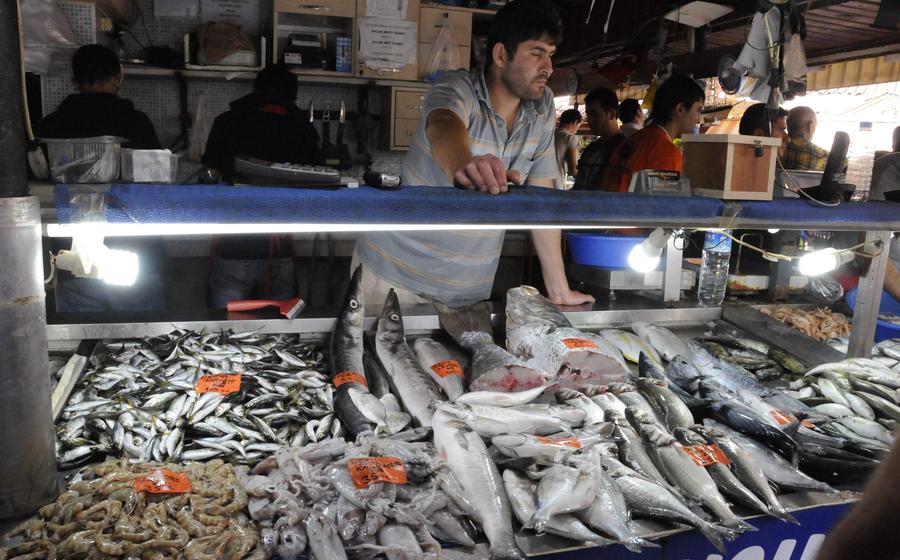
Fethiye Camii (Mosque)
- Fethiye Camii (Mosque): A Symbol of Faith and Cultural Heritage
- Location and Accessibility: Finding Your Way to the Mosque
- Architectural Style and Design: A Masterpiece of Islamic Architecture
- Interior Decor and Ambiance: A Place of Tranquility and Reverence
- Historical Significance: A Witness to Ölüdeniz's Past
- Religious Significance: A Center of Islamic Worship
- Community Events and Gatherings: A Place for Social Connection
- Educational and Cultural Programs: A Center for Learning and Exchange
- Visiting Hours and Etiquette: Respecting Local Customs
- Local Festivals and Celebrations: A Time for Joy and Unity
- Photography and Videography: Capturing the Beauty of the Mosque
- Nearby Attractions: Exploring Ölüdeniz's Treasures
- Local Cuisine and Delicacies: A Taste of Turkish Flavors
- Accommodations and Hotels: Finding Your Home Away from Home
- Insider Tip: Unveiling Hidden Gems
Fethiye Camii (Mosque): A Symbol of Faith and Cultural Heritage
A prominent landmark in the heart of Ölüdeniz, the Fethiye Camii (Mosque) stands as a testament to the town's rich cultural heritage and religious devotion. Built during the Ottoman era, the mosque has served as a spiritual sanctuary for generations of Muslims and remains an essential part of the community's religious and social fabric. Its stunning architecture, intricate tilework, and serene ambiance create a sense of awe and tranquility, making it a must-visit destination for anyone seeking to delve into Ölüdeniz's cultural tapestry.
History and architectural significance:
The Fethiye Camii was constructed in the 16th century during the reign of Sultan Suleiman the Magnificent, a period marked by significant architectural achievements throughout the Ottoman Empire. The mosque's construction reflects the Ottoman architectural style, characterized by its harmonious blend of Islamic and Byzantine influences. Its distinctive dome, towering minarets, and intricately carved stonework showcase the artistry and craftsmanship of the era.
Role as a place of worship and community gathering:
The Fethiye Camii serves as a central place of worship for Muslims in Ölüdeniz. Its spacious prayer hall can accommodate hundreds of worshippers, who gather daily for the five mandatory daily prayers. Beyond its religious function, the mosque also serves as a community gathering place, where locals come together for social events, celebrations, and religious teachings.
Unique features and design elements:
The mosque's architectural design incorporates several unique features that set it apart from other mosques in the region. Its octagonal-shaped dome, supported by four slender minarets, is a striking feature that dominates the skyline of Ölüdeniz. The intricate tilework adorning the interior walls and mihrab (prayer niche) displays a vibrant array of colors and patterns, creating a visually stunning effect.
Symbolism and cultural significance in the region:
The Fethiye Camii holds profound symbolic and cultural significance in the region. As one of the oldest and most prominent mosques in Ölüdeniz, it represents the deep-rooted Islamic traditions of the town and its people. The mosque's presence serves as a reminder of the town's historical connection to the Ottoman Empire and its enduring legacy in shaping the cultural and religious identity of the region.
Location and Accessibility: Finding Your Way to the Mosque
Fethiye Camii (Mosque) is situated in the heart of Ölüdeniz, a picturesque town nestled along Turkey's Turquoise Coast. Its prominent location makes it easily accessible for visitors.
To reach the mosque, you can take a leisurely stroll through the charming streets of Ölüdeniz. The mosque's towering minarets serve as guiding beacons, leading you to its doorstep. For those arriving by car, ample parking is available in the vicinity, ensuring a hassle-free visit.
Whether you choose to explore Ölüdeniz on foot or by vehicle, the mosque's central position guarantees a seamless and enjoyable journey. Embrace the opportunity to immerse yourself in the town's vibrant atmosphere as you make your way to this architectural gem.
Architectural Style and Design: A Masterpiece of Islamic Architecture
The Fethiye Camii showcases a blend of traditional Islamic architecture and regional influences. Its most striking feature is its massive central dome, adorned with intricate geometric patterns and calligraphy. The dome is supported by four slender minarets, which soar high above the cityscape. The mosque's exterior is characterized by its whitewashed walls, which contrast beautifully with the blue accents of the dome and minarets.
Inside the mosque, visitors are greeted by a spacious and serene prayer hall. The interior walls are adorned with verses from the Quran, written in elegant calligraphy. The floor is covered with soft carpets, inviting worshippers to pray in comfort. The mosque also features a number of beautiful stained-glass windows, which cast a colorful glow throughout the interior space.
The Fethiye Camii is a true masterpiece of Islamic architecture, and it is a must-see for anyone visiting Ölüdeniz. Its unique design and spiritual atmosphere make it a place of beauty and inspiration.
Interior Decor and Ambiance: A Place of Tranquility and Reverence
The Fethiye Camii's interior is a masterpiece of Islamic art and design, creating an atmosphere of peacefulness and spirituality that captivates visitors. The mosque's layout is simple yet elegant, with a large prayer hall flanked by smaller rooms for ablutions and religious instruction. The walls are adorned with intricate tilework, calligraphy, and decorative elements, showcasing the skill and artistry of Ottoman craftsmen.
The tilework is particularly noteworthy, featuring geometric patterns and vibrant colors that create a mesmerizing effect. The calligraphy, written in elegant Arabic script, includes verses from the Quran and the names of Allah and the Prophet Muhammad. These decorative elements not only beautify the mosque but also serve as reminders of the sacredness of the space.
The mosque's interior is designed to promote a sense of tranquility and reverence. The soft, natural light filtering through the stained-glass windows creates a serene atmosphere, conducive to prayer and contemplation. The acoustics of the prayer hall are also carefully designed, allowing the imam's voice to carry clearly without echoing, ensuring that worshippers can focus fully on their prayers.
Visitors to the Fethiye Camii are encouraged to respect the mosque's sacred nature by dressing appropriately and observing proper etiquette. Women should cover their heads and shoulders, while men should remove their shoes before entering the prayer hall. Visitors should also be mindful of noise levels and avoid disturbing worshippers during prayer times.
Historical Significance: A Witness to Ölüdeniz's Past
The Fethiye Camii stands as a silent witness to the rich history and cultural evolution of Ölüdeniz. Built during the Ottoman Empire's reign, the mosque embodies the architectural influences and grandeur of that era. Its existence is deeply intertwined with the town's identity, serving as a focal point for religious, social, and cultural gatherings throughout the centuries.
One fascinating aspect of the mosque's history lies in its connection to the Ottoman Empire. During the empire's rule, Ölüdeniz flourished as a significant trading hub, attracting merchants and travelers from far-off lands. The construction of the mosque during this period reflects the town's growing prosperity and the empire's commitment to preserving its Islamic heritage.
Stories and anecdotes abound regarding the mosque's past. Locals recount tales of devout worshippers who made pilgrimages to the mosque, seeking spiritual guidance and blessings. Legends speak of hidden treasures buried beneath the mosque's foundation, left behind by wealthy merchants as a testament to their faith.
Preservation efforts have played a crucial role in maintaining the mosque's historical integrity. Over the years, meticulous restoration work has been carried out to ensure that the mosque's original architectural features and decorative elements remain intact. This dedication to preserving the past ensures that the Fethiye Camii continues to serve as a living testament to Ölüdeniz's rich cultural heritage.
Religious Significance: A Center of Islamic Worship
The Fethiye Camii holds immense religious significance as a center of Islamic worship in Ölüdeniz. For the Muslim community, it serves as a sacred space for prayer and spiritual connection. The mosque's primary purpose is to facilitate the five daily prayers, which are observed by a significant portion of the local population. Devout Muslims gather within the mosque's tranquil walls to perform their religious obligations, seeking guidance and solace in their faith.
During the holy month of Ramadan, the mosque becomes even more vibrant with special observances and communal prayers. The faithful engage in extended night prayers, known as Tarawih, and gather for collective breaking of the fast at sunset. These Ramadan traditions foster a sense of unity and deepen the bonds within the Muslim community.
Non-Muslim visitors are welcome to enter the mosque outside of prayer times, provided they adhere to the dress code and behave respectfully. This offers a unique opportunity to witness Islamic rituals and gain insights into the spiritual practices of the local community. By observing the mosque's religious significance, visitors can foster interfaith understanding and appreciate the diversity of religious expressions in Ölüdeniz.
Community Events and Gatherings: A Place for Social Connection
The Fethiye Camii is not just a place of worship; it also serves as a hub for community events, festivals, and celebrations. These gatherings bring people together, fostering social cohesion and unity within the community. Visitors are welcome to attend these events and immerse themselves in the vibrant local culture.
One of the most significant events held at the mosque is the annual Ramadan festival. During this time, Muslims from all over the region gather at the mosque to celebrate the holy month. The festival features special prayers, feasts, and community gatherings. Visitors can experience the joy and camaraderie of this special occasion and learn about the traditions associated with Ramadan.
Other notable events held at the mosque include religious holidays such as Eid al-Fitr and Eid al-Adha, as well as cultural festivals showcasing traditional music, dance, and cuisine. These events are a great opportunity to witness the rich cultural heritage of the region and interact with the friendly locals.
Attending community events at the Fethiye Camii is an excellent way to connect with the local people, gain insights into their way of life, and create lasting memories. Visitors are encouraged to participate in these events, respecting local customs and traditions, and embracing the spirit of unity and togetherness.
Educational and Cultural Programs: A Center for Learning and Exchange
The Fethiye Camii is not just a place of worship; it also serves as a center for learning and cultural exchange. The mosque offers a variety of educational programs, lectures, and workshops that promote Islamic culture, history, and traditions. These programs are open to both Muslims and non-Muslims, providing an opportunity for visitors to deepen their understanding of Islam and engage in meaningful dialogue.
The mosque's educational programs cover a wide range of topics, including Islamic theology, history, art, and architecture. Visitors can learn about the fundamental beliefs of Islam, the life of the Prophet Muhammad, and the development of Islamic civilization. The mosque also hosts lectures by renowned scholars and experts, who share their insights on various aspects of Islam and its impact on global culture.
In addition to formal programs, the mosque also facilitates informal cultural exchange and dialogue. Visitors are encouraged to interact with the local community, participate in discussions, and ask questions about Islam and Turkish culture. The mosque's welcoming atmosphere and open-door policy create a space where people of different faiths and backgrounds can come together to learn from each other and build bridges of understanding.
Visiting Hours and Etiquette: Respecting Local Customs
Visiting the Fethiye Camii, like any religious site, requires respect for local customs and traditions. The mosque is open to non-Muslim visitors during specific hours, typically outside of prayer times. It's crucial to adhere to these designated visiting hours to avoid disrupting worshippers.
When visiting the mosque, appropriate attire is essential. While there is no strict dress code, modest clothing that covers your shoulders and knees is recommended. This shows respect for the religious significance of the place. It's also important to remove your shoes before entering the mosque, as it is customary to keep the prayer area clean and free of footwear.
Inside the mosque, maintain a respectful demeanor. Avoid loud conversations, and be mindful of worshippers who may be praying or engaged in religious activities. It's considered polite to ask permission before taking photographs or videos, especially if people are present. Remember that the mosque is a place of worship, and your actions should reflect the reverence and tranquility of the space.
By following these simple guidelines, you can ensure that your visit to the Fethiye Camii is both enjoyable and respectful of the local culture and customs.
Local Festivals and Celebrations: A Time for Joy and Unity
The Fethiye Camii is not just a place of worship; it also serves as a vibrant hub for community events and celebrations. Throughout the year, the mosque hosts various festivals and celebrations that bring together the local community and visitors alike. These events showcase the rich cultural heritage of Ölüdeniz and provide a unique opportunity to experience Turkish traditions firsthand.
One of the most significant festivals associated with the mosque is the annual Ramadan Festival. This festival marks the end of the holy month of Ramadan and is celebrated with great joy and enthusiasm. During this time, the mosque becomes even more adorned with lights and decorations, and special prayers and ceremonies are held. Visitors can witness the festive atmosphere, share in the joyous celebrations, and savor the delicious traditional dishes prepared for the occasion.
Another notable event is the Mevlid Kandili, which commemorates the birth of the Prophet Muhammad. This festival is celebrated with prayers, recitations, and special programs at the mosque. Visitors are welcome to attend these events and learn more about the significance of this occasion in Islamic culture.
Participating in these local festivals and celebrations is a fantastic way to immerse yourself in the vibrant cultural tapestry of Ölüdeniz. By embracing the local traditions and customs, you'll gain a deeper understanding and appreciation for the region's rich heritage. Make sure to check the festival calendar before your visit to plan your trip accordingly and experience the joy and unity that these events bring to the community.
Photography and Videography: Capturing the Beauty of the Mosque
Respect and Etiquette: When taking photos or videos inside the mosque, it is important to be mindful of the worshippers and maintain a respectful demeanor. Avoid using flash photography or making loud noises that may disturb their prayers or meditations.
Composition and Lighting: The mosque's intricate architecture and decorative elements provide ample opportunities for stunning photographs. Experiment with different angles and perspectives to capture the grandeur of the building. Use natural light to your advantage, as the changing sunlight can create beautiful shadows and highlights.
Cultural Sensitivity: Remember that the mosque is a sacred space for Muslims, so it is essential to be culturally sensitive when taking photos or videos. Avoid capturing images of people's faces without their permission, and be mindful of any restricted areas or signs indicating no photography.
Sharing Your Experiences: After your visit, consider sharing your photos or videos on social media to inspire others to explore the beauty of the Fethiye Camii and Ölüdeniz. Be sure to tag the mosque and use relevant hashtags to help spread the word.
Nearby Attractions: Exploring Ölüdeniz's Treasures
Fethiye Camii (Mosque) is a beautiful and historic mosque, but it is just one of the many attractions that Ölüdeniz has to offer. Visitors to the mosque can also explore the following nearby attractions:
- Ölüdeniz Beach: This stunning beach is known for its crystal-clear waters and white sand. It is a great place to relax, swim, sunbathe, or enjoy water sports.
- Blue Lagoon: This lagoon is a popular spot for swimming, diving, and snorkeling. It is also a great place to relax and enjoy the scenery.
- Butterfly Valley: This valley is home to a variety of butterflies, as well as other wildlife. It is a great place to hike, nature-watch, or simply enjoy the outdoors.
- Saklıkent Gorge: This gorge is a popular spot for hiking, swimming, and canyoning. It is also a great place to see the natural beauty of Ölüdeniz.
- Tlos Ancient City: This ancient city is home to a variety of ruins, including a theater, a temple, and a necropolis. It is a great place to learn about the history of Ölüdeniz.
Transportation Options:
There are several transportation options available to visitors who want to explore these nearby attractions. Visitors can rent a car, take a taxi, or use public transportation. There are also several tour companies that offer guided tours of the area.
Tips for Creating an Itinerary:
When creating an itinerary for exploring Ölüdeniz, it is important to consider the following factors:
- Time: How much time do you have to explore the area?
- Interests: What are your interests? Do you want to focus on history, nature, or something else?
- Budget: How much money do you want to spend?
Once you have considered these factors, you can start to create an itinerary that meets your needs. Be sure to include some time to relax and enjoy the scenery.
Local Cuisine and Delicacies: A Taste of Turkish Flavors
Indulge in a Culinary Adventure:
Your journey to Ölüdeniz is incomplete without savoring the town's delectable cuisine. The area surrounding the Fethiye Camii is a haven for food enthusiasts, offering a tantalizing array of local dishes and delicacies.
Must-Try Culinary Experiences:
Mezze Platter: Embark on a culinary voyage with a traditional Turkish mezze platter. Savor a variety of small dishes, including hummus, baba ghanoush, stuffed grape leaves, and more.
Grilled Meats: Delight your palate with succulent grilled meats, a cornerstone of Turkish cuisine. From succulent kebabs to tender lamb chops, the aromas will draw you in.
Seafood Delights: Ölüdeniz's proximity to the sea means an abundance of fresh seafood. Indulge in grilled fish, calamari, or succulent shrimp, all infused with the flavors of the Mediterranean.
Turkish Pizza: Experience the Turkish take on pizza with "pide," a boat-shaped flatbread topped with savory fillings like minced meat, cheese, or vegetables.
Baklava: Satisfy your sweet tooth with baklava, a filo pastry dessert filled with chopped nuts and sweetened with syrup. It's a must-try delicacy in Turkey.
Insider Tips:
-
Explore Local Markets: Immerse yourself in the vibrant atmosphere of Ölüdeniz's local markets. Discover fresh produce, spices, and traditional Turkish delights.
-
Seek Recommendations: Ask locals or your hotel staff for their favorite food spots. They can guide you to hidden gems that may not be on the tourist radar.
-
Embrace Street Food: Don't miss the opportunity to sample Ölüdeniz's street food. From gözleme (stuffed flatbread) to döner kebabs, these culinary creations offer a taste of local life.
-
Vegetarian Delights: While meat is a staple in Turkish cuisine, there are plenty of options for vegetarians. Look for dishes like vegetable kebabs, stuffed peppers, and lentil soup.
-
Share the Experience: Dining in Turkey is often a communal affair. Share your meal with friends or family, and savor the flavors together.
Accommodations and Hotels: Finding Your Home Away from Home
When planning your stay in Ölüdeniz, finding a comfortable and convenient place to rest your head is essential. The area surrounding the Fethiye Camii offers a variety of accommodation options to suit different needs and budgets.
For those seeking a luxurious experience, several upscale hotels are located within walking distance of the mosque. These hotels often feature stunning views of the Mediterranean Sea, private balconies, and top-notch amenities.
If you prefer a more budget-friendly option, numerous guesthouses and hostels are available in the area. These accommodations offer a cozy and social atmosphere, perfect for backpackers and solo travelers.
To immerse yourself fully in the local culture, consider staying in a traditional Turkish guesthouse. These guesthouses often provide a more authentic experience, with shared spaces and home-cooked meals.
When choosing a hotel or guesthouse, consider factors such as proximity to the mosque, amenities, and overall atmosphere. Reading reviews and comparing prices online can help you find the best option for your needs.
Here are some additional tips for booking accommodations in Ölüdeniz:
-
Book your stay in advance, especially during peak tourist season, to secure your preferred choice.
-
Consider exploring different neighborhoods in Ölüdeniz to find the one that best suits your preferences and budget.
-
Take advantage of online booking platforms to compare prices and read reviews from fellow travelers.
-
If you're on a tight budget, consider staying in a hostel or guesthouse, which often offers shared rooms and budget-friendly rates.
-
Don't hesitate to ask locals for recommendations or seek advice from your hotel or tour operator.
Insider Tip: Unveiling Hidden Gems
Beyond the well-known attractions and landmarks, Ölüdeniz holds a treasure trove of hidden gems waiting to be discovered by curious travelers. One such gem is the vibrant local market, tucked away in the heart of the town. This bustling marketplace offers a glimpse into the daily lives of the locals, where you can find an array of fresh produce, handmade crafts, and traditional Turkish delights.
For a unique culinary experience, venture off the beaten path and seek out the small, family-run restaurants that dot the side streets. These hidden gems often serve up authentic Turkish dishes prepared with love and passion, using fresh, local ingredients. Don't miss the chance to savor the flavors of traditional gözleme, a savory flatbread filled with cheese, spinach, or minced meat, or indulge in the sweetness of künefe, a crispy pastry topped with shredded phyllo dough and a gooey cheese filling.
If you're a history buff, delve into the town's past at the Ölüdeniz Museum, which houses a collection of artifacts and exhibits that narrate the story of the region's rich history and cultural heritage. From ancient ruins to Ottoman relics, the museum offers a fascinating glimpse into the town's past.
For a truly memorable experience, embark on a sunset cruise along the stunning coastline of Ölüdeniz. As the sun dips below the horizon, casting a golden glow over the turquoise waters, you'll witness a breathtaking spectacle of colors and reflections. Take this opportunity to capture some Insta-worthy shots and create lasting memories of your time in Ölüdeniz.
